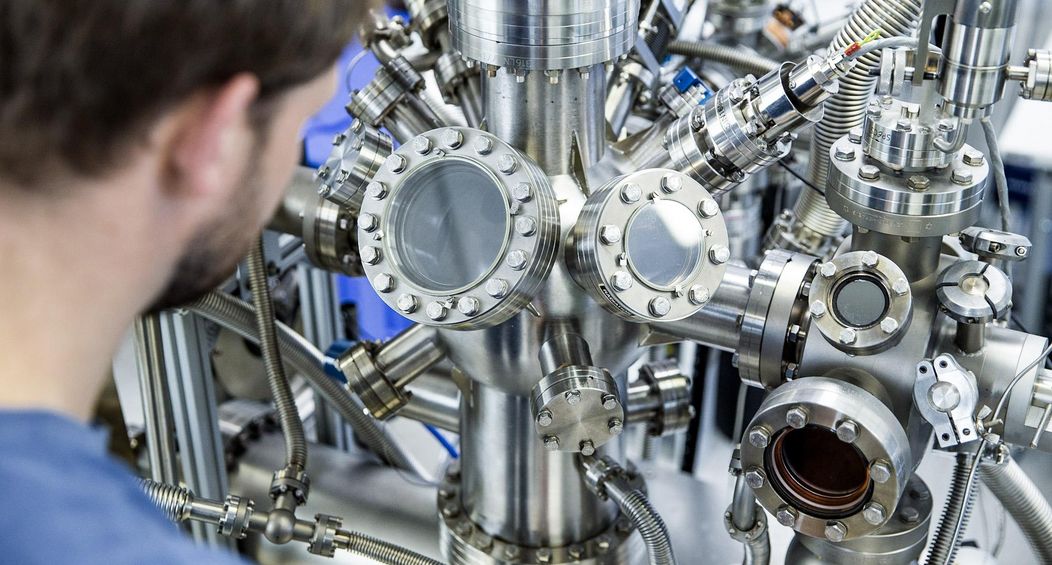The SPECS NAP-XPS system installed few years ago at Charles University in Prague, Czech Republic has been integrated in the CERIC open access consortium. Under the supervision of Prof. Vladimir Matolin and his research group, the system is working at full capacity and has a substantial list of publications
The Surface Physics Laboratory (SPL) at Charles University is an open-access facility that is part of the Central European Research Infrastructure Consortium (CERIC) which brings together scientific resources from eight European countries. The laboratory in Prague, together with the Materials Science Beamline (MSB) at Elettra synchrotron in Trieste, Italy offers the scientists access to a multitude of experimental set-ups and investigation techniques such as near-ambient pressure (NAP) – XPS and UPS, ultra-high vacuum (UHV) - XPS and UPS, near-edge X-ray absorption fine structure (NEXAFS), X-ray absorption (XAS), field emission scanning electron microscope (FESEM), etc. Calls for proposals take place twice a year via the CERIC consortium.
The NAP-XPS system allows for carrying out XPS/UPS measurements under near ambient pressures up to 50 mbar as well as UHV conditions. It is equipped with a PHOIBOS 150 NAP 1D-DLD hemispherical analyzer, DeviSim In-Situ Cell as a small reactor inserted into the analysis chamber and a small-spot monochromatic X-ray source with Al anode µ-FOCUS 600. A detailed description of the system can be found here. Soon, the experimental open-access facility in Prague will be extended with the fully automated NAP-XPS system, the EnviroESCA (link zu Produkt). More information about the latest addition of the Surface Physics Laboratory can be found here.
The SPL has an extensive publication list. Here are just few of the recent highlights:
- “In situ probing of Pt/TiO2 activity in low-temperature ammonia oxidation” by Lidiya S. Kibis et al. published in Catalysis Science & Technology journal in 2020, in which the scientists employed NAP-XPS and XAS investigation techniques for the study of Pt/TiO2 catalysts as potential candidates for the selective NH3 oxidation at low temperatures (T < 200°C) https://doi.org/10.1039/D0CY01533D
- “Identifying Ionic and Electronic Charge Transfer at Oxide Heterointerfaces” by Marc-André Rose et al. was published in Advanced Materials journal in 2020. The publication shows a combined experimental and theoretical study of the ion and electron transfer at LaAlO3/SrTiO3 (LAO/STO) heterointerfaces. The NAP-XPS investigations were carried out by using the laboratory NAP-XPS system at Charles University in Prague as well as the NAP-XPS end station at Advanced Light Source (ALS), Beamline 11.0.2., Berkeley, USA https://doi.org/10.1002/adma.202004132
- “Mobility and versatility of the liquid bismuth promoter in the working iron catalysts for light olefin synthesis from syngas” by Bang Gu et al. was published in Chemical Science journal in 2020. The authors used different experimental techniques (XRD, TEM, NAP-XPS, XAFS and XANES) for the study of the unexpected increase in catalytic activity of iron catalysts supported by carbon nanotubes for olefin synthesis via Fischer–Tropsch reaction when using liquid bismuth as promoter. https://doi.org/10.1039/D0SC01600D
- “Synergy between Metallic and Oxidized Pt Sites Unravelled during Room Temperature CO Oxidation on Pt/Ceria” by Frederic C. Meunier et al was published in Angewandte Chemie International Edition journal at the end of 2020. The authors investigate the underlying mechanism of the catalytic activity of platinum nanoparticles supported on ceria for the CO oxidation reaction at low temperatures, by combining NAP-XPS and DRIFTS analysis techniques. The experiments revealed that both metallic Pt as well as oxidized Pt play an important role for the catalytic process. https://doi.org/10.1002/anie.202013223
